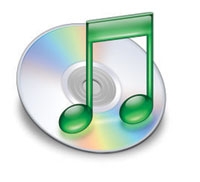The Download Challenge

Napster is dead. Long live Napster 2.0. Out of the battle between the recording industry and the illegal peer-to-peer file-sharing services has emerged a new generation of legal online services that's rapidly changing the way people buy music. As traditional record stores seem more and more like antique dealers, savvy computer users are letting their mouse clicks do the shopping, sampling hundreds of thousands of songs for free and buying the ones they want for less than a buck.
And once the songs are downloaded to their hard drives, they can usually burn them to discs playable in any CD player or transfer them to flash-memory or hard-disk portables. Given where all of this started, though, it's notable that hardly any services support the ubiquitous MP3 format. They instead favor WMA (Windows Media Audio) or AAC (Advanced Audio Codec), both of which sounded better than MP3 in Sound & Vision's scientifically controlled listening tests in June 2002 and September 2000.
I took a close look at four of the most prominent music services: Apple iTunes Music Store, MusicMatch 8.1, Napster 2.0, and RealOne Rhapsody. The services have some important things in common: All four are supported by the five major record companies - BMG, EMI, Sony, Universal, and Warner - and all feature releases from hundreds of independent labels as well. They also all offer previews of the songs you're considering, and all have decent online help. My mission was to determine the breadth and depth of their offerings, how easy they are to use, and which offers the best value. The comparative table on the following two pages tells you pretty much everything you need to know. But first let's take a quick look at each service.
Apple iTunes Music Store  Betting that no one wants to pay for another subscription and that 99¢ is a reasonable price for a song, the iTunes Music Store opened its doors last April and racked up over one million downloads the first week. Those numbers are pretty amazing when you consider that access was limited to Macintosh owners who had the latest version of its operating system. But PC users wanted in, too. Their wish was granted in October, and after only three and a half days, Apple announced that one million copies of its iTunes for Windows music-management software had been downloaded.
Betting that no one wants to pay for another subscription and that 99¢ is a reasonable price for a song, the iTunes Music Store opened its doors last April and racked up over one million downloads the first week. Those numbers are pretty amazing when you consider that access was limited to Macintosh owners who had the latest version of its operating system. But PC users wanted in, too. Their wish was granted in October, and after only three and a half days, Apple announced that one million copies of its iTunes for Windows music-management software had been downloaded.
The first thing you see when you click on your desktop's iTunes icon is a list of all the music on your computer (including previously ripped MP3 files). Clicking on the Music Store icon connects you to the Internet and a home page of featured singles that changes daily.
After listening to the hit single "Stacy's Mom" by Fountains of Wayne, I sampled the rest of their Welcome Interstate Managers album, liked what I heard, and ended up downloading all 16 songs, which I burned to a CD. A $13.99 charge appeared on my credit card. (Buying all the songs individually would have cost me $15.84.)
You don't need an iPod to use the Music Store, but then you'll either have to burn a disc as a standard audio CD or download to your hard drive and use the transfer program that comes with AAC-compatible portables like some players from Panasonic.




























































